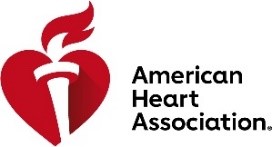
American Heart Month – Five Numbers to Know!
February 13, 2019 | Dawn Wiggington, American Heart Association
During American Heart Month each February, the nation comes together, igniting a wave of red from coast to coast. From landmarks to news anchors and neighborhoods to online communities; this annual groundswell unites millions of people for a common goal: the eradication of heart disease and stroke.
During February, staff, volunteers, survivors and donors amplify Go Red for Women’s lifesaving message: to keep awareness high and prompt action including, but not limited to, knowing your numbers and family history, recognizing the signs and symptoms of both a heart attack and stroke, learning CPR, making a healthy behavior change and more.
About Go Red for Women
The American Heart Association’s Go Red for Women® movement is the trusted, passionate, relevant force for change to end heart disease and stroke in women all over the world. While nearly 80 percent of cardiac events can be prevented, cardiovascular disease is the leading cause of death in women, claiming the lives of 1 in 3 women. For 15 years, Go Red for Women has provided a platform for women to come together, raise awareness, fund lifesaving research, advocate for change and improve the lives of all women everywhere. The American Heart Association’s Go Red for Women movement is nationally sponsored by CVS Health, with additional support from national cause supporters. Connect with us on GoRedforWomen.org, Facebook, Twitter or by calling 1-888-MY-HEART (1- 888-694-3278).
Five Numbers
Five Numbers that all women should know to take control of their heart health are:
- Total Cholesterol
- HDL (good) Cholesterol
- Blood Pressure
- Blood Sugar
- Body Mass Index (BMI)
Knowing these numbers can help women and their healthcare provider determine their risk for developing cardiovascular diseases. It’s time for all women to learn the most critical numbers in their life – their hearts depend on it.
Understand Risk Factors – There are some you can control like blood pressure, smoking, cholesterol, lack of regular physical activity, and some you can’t control like age, gender and family history.
Take Action and Manage Your Numbers – Schedule a separate visit with your healthcare provider to learn these numbers and commit them to memory. Work to improve your numbers, if necessary.
Know the Warning Sign for Hearth Disease and Stroke – cardiovascular diseases kill more women than all forms of cancer combined. Eighty percent of cardiac events in women may be prevented if women made the right choices for their hearts involving diet, exercise and abstinence from smoking. Don’t ignore heart problems. It’s a matter of life and death! For example, you should know the warning signs so that you can get help right away, either for yourself or someone close to you. Acting quickly can save lives!
Some heart attacks are sudden and intense and not one doubts what is happening. But most heart attacks start slowly, with mild pain or discomfort. Often people are sure what’s wrong and wait too long before getting help. Here are signs that can mean a heart attack is happening:
- Uncomfortable pressure, squeezing, fullness or pain in the center of your chest. It lasts more than a few minutes, or goes away and comes back.
- Pain or discomfort in one or both arms, the back, neck, jaw or stomach.
- Shortness of breath with or without chest discomfort
- Other signs such as breaking out in a cold sweat, nausea or lightheadedness.
- As with men, women’s most common heart attack symptom is chest pain or discomfort. But women are somewhat more likely than men to experience some of the other common symptoms, particularly shortness of breath, nausea/vomiting and back or jaw pain.
- If you have any of these signs, don’t wait! Call 9-1-1! Get to a hospital right away!
- Don’t wait longer than a few minutes (no more than five) before calling for help!
Spot a Stroke F.A.S.T. CALL 9-1-1. Get to a Hospital right away. Calling 9-1-1 is almost always the fastest wat to get lifesaving treatment. Emergency Medical Services (EMS) staff can begin treatment when they arrive – up to an hour sooner than if someone gets to the hospital by car. The staff are also trained to revive someone whose heart has stopped. You’ll also get treated faster in the hospital if you come by ambulance. If you can’t access EMS, have someone drive you to the hospital right away. If you’re the one having symptoms, don’t drive yourself unless you have absolutely no other option. Time to Call 9-1-1:
F = Face Drooping
A = Arm Weakness
S = Speech Difficulty
T = Time to call 911
Be relentless in support of women’s health.
Together we are empowering women to beat heart disease and stroke, giving them more time to do amazing things. Let’s come together to prevent heart disease and stroke!